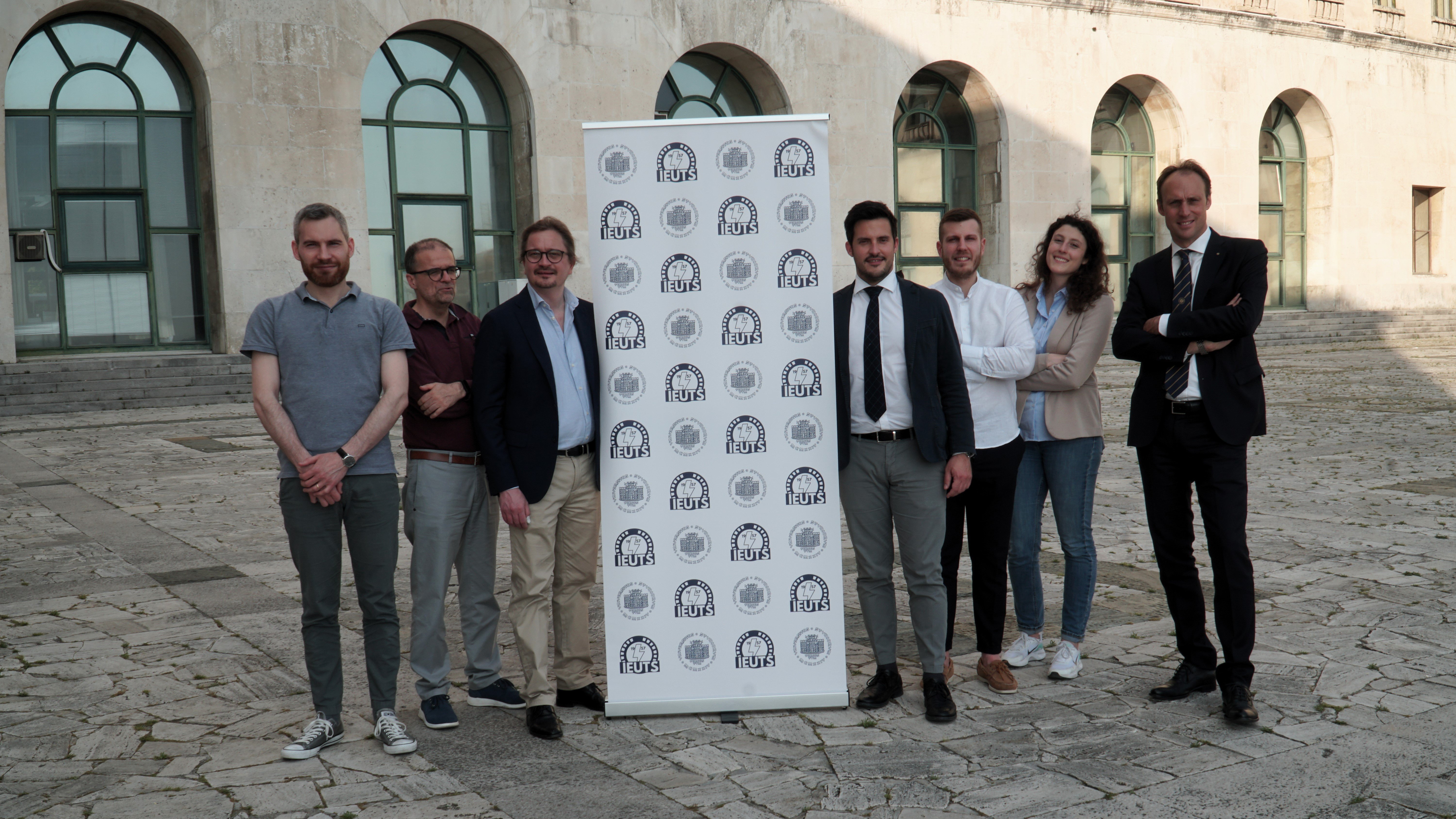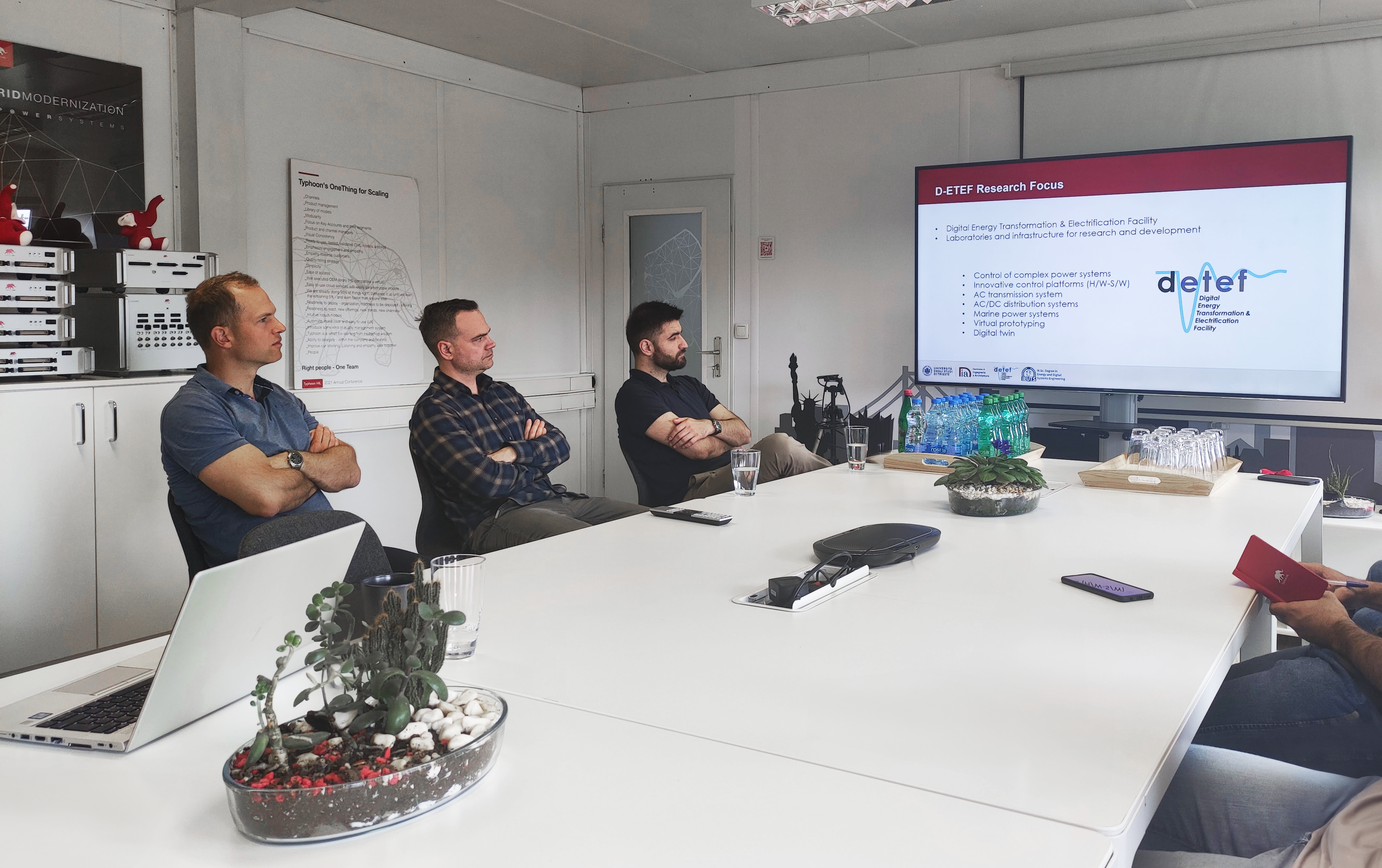
This blog article explores the research of Prof. Daniele Bosich from the University of Trieste in Italy, focusing on his group’s work on DC system stability using Hardware-in-the-Loop (HIL) simulation. It delves into the challenges, solutions, and advantages of using Typhoon HIL for research, education, and industry collaboration in power systems.
Introduction | Grid Modernization at the University of Trieste
Power system stability, particularly in Direct Current (DC) systems, faces unique challenges due to the interplay between high-bandwidth control converters and filtering stages. This blog article dives into the research of Prof. Daniele Bosich at the University of Trieste's Digital Energy Transformation and Electrification Facility (D-ETEF), focusing on utilizing Hardware-in-the-Loop (HIL) simulation for DC system stability analysis. We will also see how he applies HIL technology in the University’s Master Program in Electrical Energy and Systems Engineering (IEUTS) to teach his students valuable hands-on engineering skills that are of value for their career development.
Challenges | DC System Stability Research
Prof. Bosich's research addresses the potential for instabilities arising from the interaction between converters and filtering circuits. Their group’s research approach involves a multi-pronged strategy: understanding the dynamic interaction that leads to instability, redesigning filtering stages for improved performance, and implementing control-based compensation techniques. This research has been successfully applied to various DC system configurations, from single converter setups to complex zonal power systems. Notably, Prof. Bosich highlights the utilization of Typhoon HIL for this research, resulting in over a dozen published papers.

D-ETEF group photo at the annual Advisory Board meeting for the Master Program in Electrical Energy and Systems Engineering, where company members join in to support shaping a program that will stay up to date with current trends in the industry.
HIL Benefits | Research and Teaching with HIL
The choice of Typhoon HIL as the research platform was made due to its numerous advantages. Compared to traditional simulation methods, Typhoon HIL offers enhanced precision and a more realistic representation of power system dynamics. This aligns perfectly with the growing industry demand for HIL testing of control systems on real hardware. Furthermore, Typhoon HIL facilitates seamless collaboration between research institutions and companies, enabling researchers to validate their findings against practical scenarios. Additionally, it transcends the limitations of average value models by incorporating switching models for a more accurate representation of system behavior.
The benefits extend beyond research. Typhoon HIL offers valuable educational tools for students in the field of power electronics and power systems. It provides hands-on experience with cutting-edge industry-grade technologies and facilitates the development and testing of control systems in a safe-to-use high-fidelity simulated environment. This practical experience complements theoretical knowledge and fosters a deeper understanding of power system dynamics. Students can also rely on the HIL Academy learning platform, where they can both reinforce basic concepts in the HIL Fundamentals course, but also gain certification for their knowledge, where the HIL Specialist 2.0 Specialization Program has been the most sought-after so far.

D-ETEF research group’s presentation at the Typhoon HIL R&D Center in Novi Sad, Serbia.
Summary | HIL in One Word
HIL in one word is “versatile”. Through this interview, we learn how Prof. Bosich's research on DC system stability with Typhoon HIL demonstrates the versatility, efficiency, and immense value of this technology for research, education, and industry collaboration in the quest for a more stable and efficient power grid.
Are you exploring adopting HIL in your work?
Are you interested in more stories like this?
Learn more about the IEUTS program. 
Credits:
Text | Debora Santo
Visuals | Milica Obradovic
Blog Editor | Debora Santo


